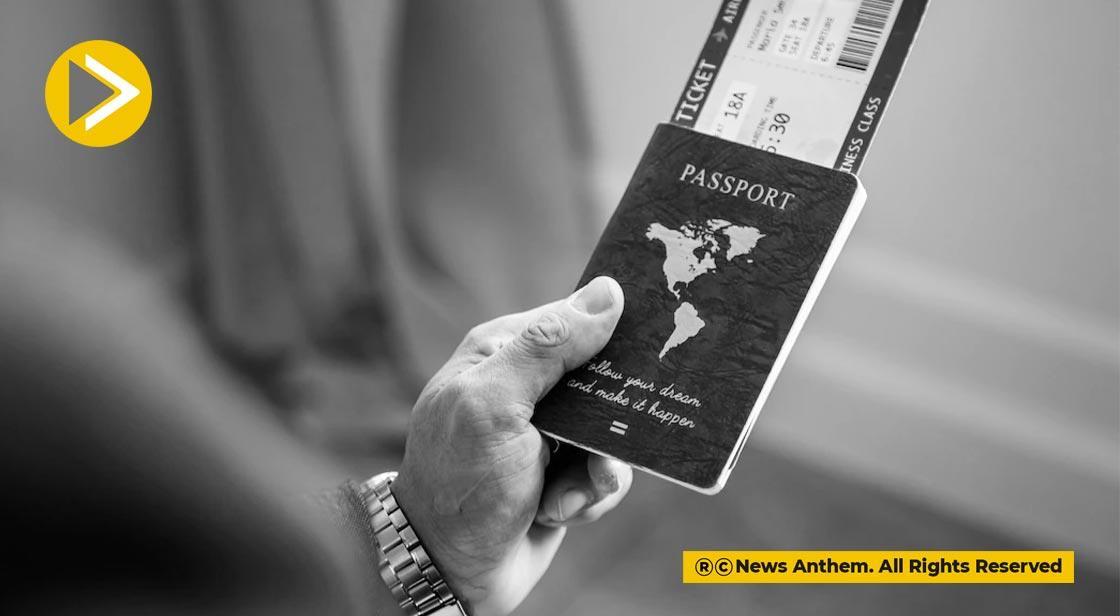US Expands Visa Bond Policy: Should Indian Tourists Be Concerned?

News Synopsis
The United States has updated its list of countries whose citizens are now required to post a visa bond of up to $15,000 before entering the country. This move comes as part of a 12-month Visa Bond Pilot Program aimed at reducing visa overstays by temporary visitors.
US expands visa bond policy under pilot program
The Department of State’s initiative, which began on August 20, 2025, and runs until August 5, 2026, is designed to target nationals of countries with high visa overstay rates, deficient screening or vetting systems, or those that offer Citizenship by Investment (CBI) programs without residency requirements.
While the addition of a third country to this list has drawn attention globally, Indian travelers need not worry, as India’s overstay rate remains low at just 1.29% for B1/B2 visas — well below the risk threshold.
Understanding the US Visa Bond Pilot Program
Purpose and scope
The Visa Bond Pilot Program applies to foreigners applying for temporary visitor visas (B-1/B-2) — for business or tourism — who belong to countries that have been identified by the US Department of Homeland Security (DHS) as having high visa overstay rates or limited vetting mechanisms.
Under the program, eligible travelers must post a refundable bond as a condition of visa issuance. The bond amount, determined during the visa interview, may be $5,000, $10,000, or $15,000, depending on the applicant’s background and perceived risk.
“Travellers will have to post a bond of up to $15,000 as a condition of visa issuance, as determined by the consular officers,” the Department of State said.
Duration and implementation of Visa Bond Pilot Program
The pilot program began on August 20, 2025, and will remain effective until August 5, 2026. It aims to evaluate whether requiring a financial bond can effectively reduce visa overstay rates among certain nationalities.
Eligible categories
The policy applies to:
-
Nationals of countries with high visa overstay rates
-
Countries with deficient screening and vetting procedures
-
Nations offering Citizenship by Investment (CBI) without residency requirements
Countries currently on the visa bond list
Three nations under scrutiny
As of now, three countries have been placed on the US visa bond list:
-
The Gambia (added on October 11, 2025)
-
Malawi (added on August 20, 2025)
-
Zambia (added on August 20, 2025)
Why these countries were included
According to the DHS FY 2024 Overstay Report (updated July 16, 2025), these nations have consistently high overstay rates among visitors holding B1/B2 visas.
-
The Gambia: Overstay rate of 38.79% for B1/B2 visas and 18.6% across all categories.
-
Malawi: Overstay rate of 14.32% (land) and 4.17% (air/sea) for B1/B2 visas; student and exchange visa overstay rate at 19.71%.
-
Zambia: Reported overstay rates exceeding 10%.
In contrast, India’s overstay rate for FY 2023 was just 1.58% overall and 1.29% for B1/B2 visas, indicating strong compliance by Indian travelers.
Visa Bond Requirements and Ports of Entry
Designated entry points
Travelers subject to the visa bond requirement must enter and exit the US through specific ports of entry designated by the DHS. These include:
-
Boston Logan International Airport (BOS)
-
John F. Kennedy International Airport (JFK)
-
Washington Dulles International Airport (IAD)
How the bond system works
Applicants must submit the Department of Homeland Security’s Form I-352 (Immigration Bond) via the US Treasury’s Pay.gov platform. This bond acts as a security deposit to ensure that visa holders comply with the terms of their non-immigrant stay.
If travelers follow all visa rules, the bond is automatically refunded after departure or if they do not travel. However, if a traveler overstays or violates visa conditions, the bond may be forfeited.
Visa Bond Compliance and Refund Conditions
Full refund eligibility
The full bond amount is returned when the applicant meets all visa and bond conditions. The bond is canceled and refunded automatically if:
-
The visa holder departs on or before the authorized stay date, or
-
The traveler does not visit the US before the visa expires, or
-
The traveler is denied entry at a US port of entry.
When the Visa Bond is Considered Breached
USCIS enforcement
If the visa holder overstays or violates any bond terms, the Department of Homeland Security (DHS) forwards the case to the US Citizenship and Immigration Services (USCIS) to determine if a breach has occurred.
This may happen if:
-
The traveler stays beyond the authorized period;
-
The individual fails to depart the US after visa expiry; or
-
The visa holder applies for asylum or seeks to change non-immigrant status.
Should Indian tourists be concerned?
Low overstay rates safeguard Indian travelers
For Indian nationals, this policy does not pose any immediate concern. With an overstay rate of just 1.29% for B1/B2 visas, India remains well below the threshold for inclusion in the visa bond program.
In fact, the US and India continue to maintain strong diplomatic and travel ties, with Indian tourists among the top 10 nationalities visiting the US each year. Unless there is a sharp increase in overstay incidents, India is unlikely to be added to the list.
Conclusion: A policy of caution, not exclusion
The US Visa Bond Pilot Program represents Washington’s effort to enforce visa compliance and curb overstay rates among high-risk nations. While three African countries have been added to the list so far, India remains unaffected due to its low overstay rates and robust travel record.
For travelers, the message is clear — adhering to visa conditions ensures smooth travel and compliance, while also maintaining a country’s reputation for responsible tourism and business visits.
You May Like









